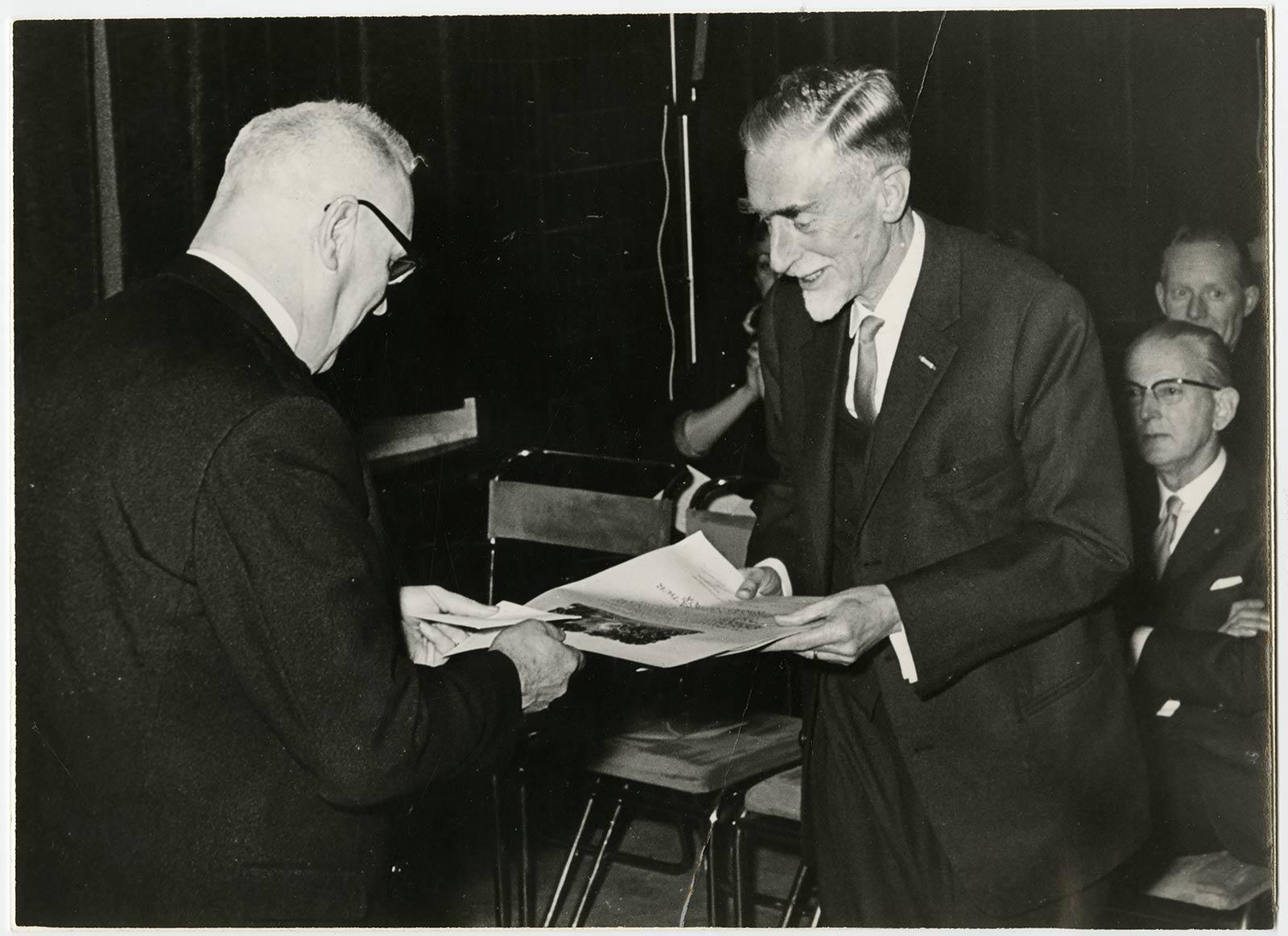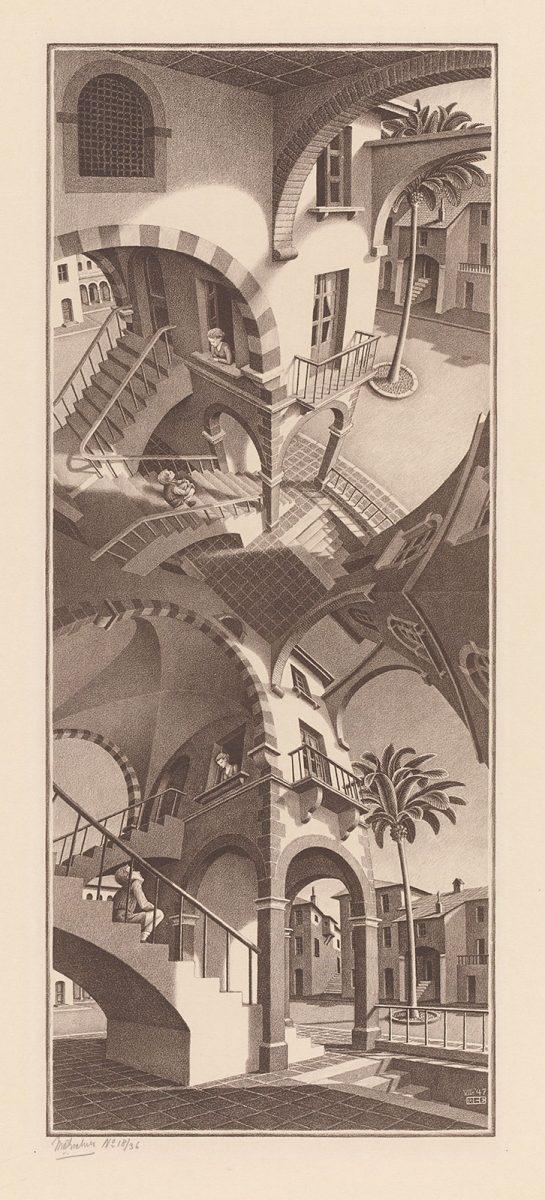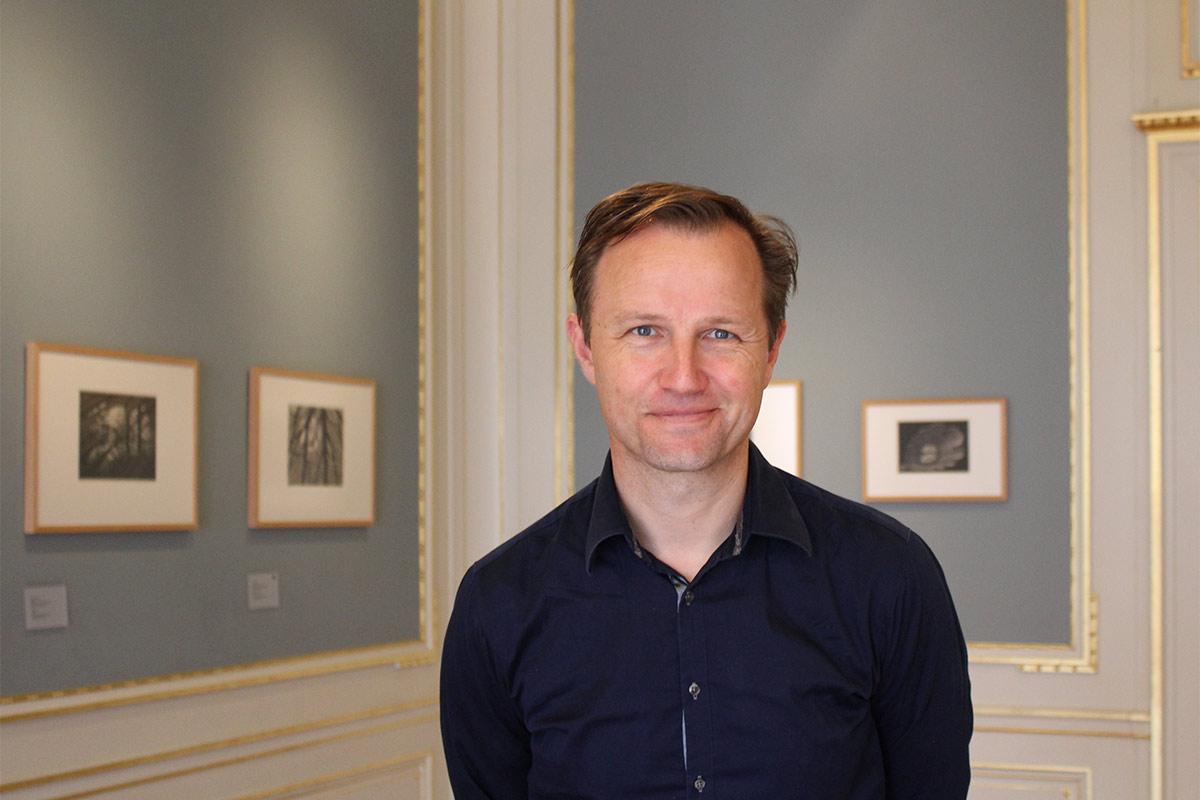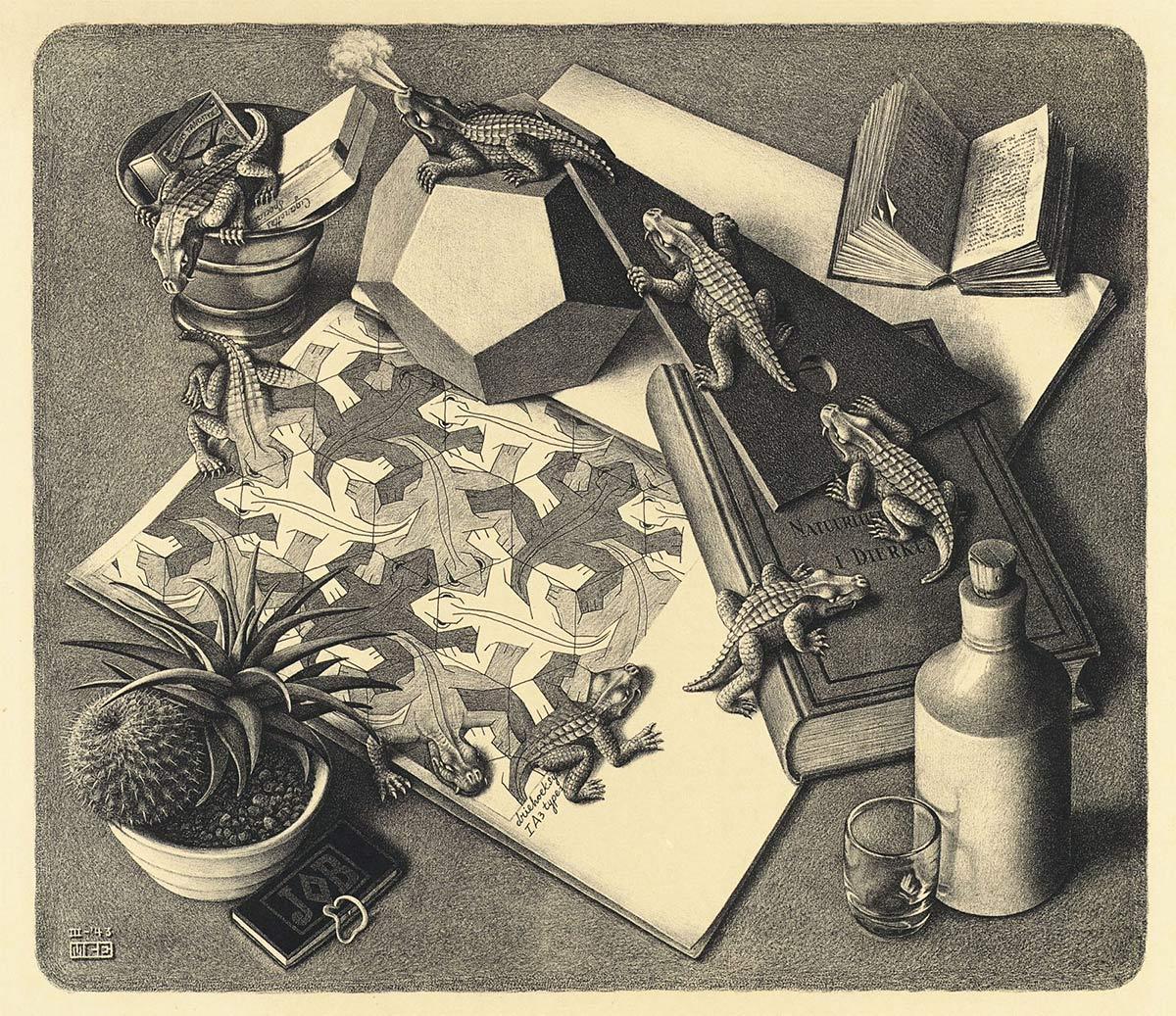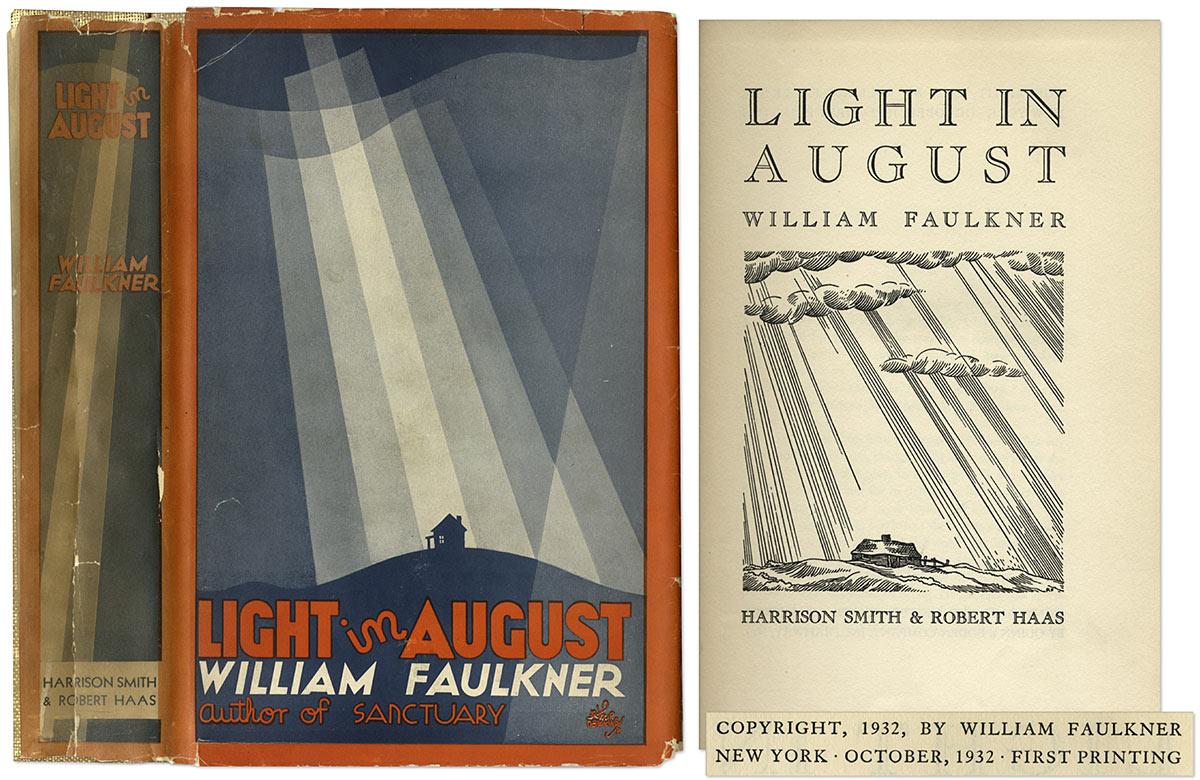Escher met him as Friar Erich, a member of the congregation of Saint Louis in Oudenbosch. This Erich was fascinated by the print Up and Down, which hung on the wall of his classroom. He knew Albert Bosman, the man who brought artist and admirer together. It was the start of a lifelong friendship. Under the name Bruno Ernst, Friar Erich taught maths at the academy for teachers, where he also founded the mathematics magazine Pythagoras. After they met in August 1956, they saw each other often, De Rijk always introducing himself as Friar Erich. It took Escher several months to find out his real name. Escher was captivated by this young man (he was 30), as the latter, being a teacher, was capable of explaining complex mathematical issues in a simple way. One print after another was discussed during these meetings and the sketches were included as well to get a complete picture.
